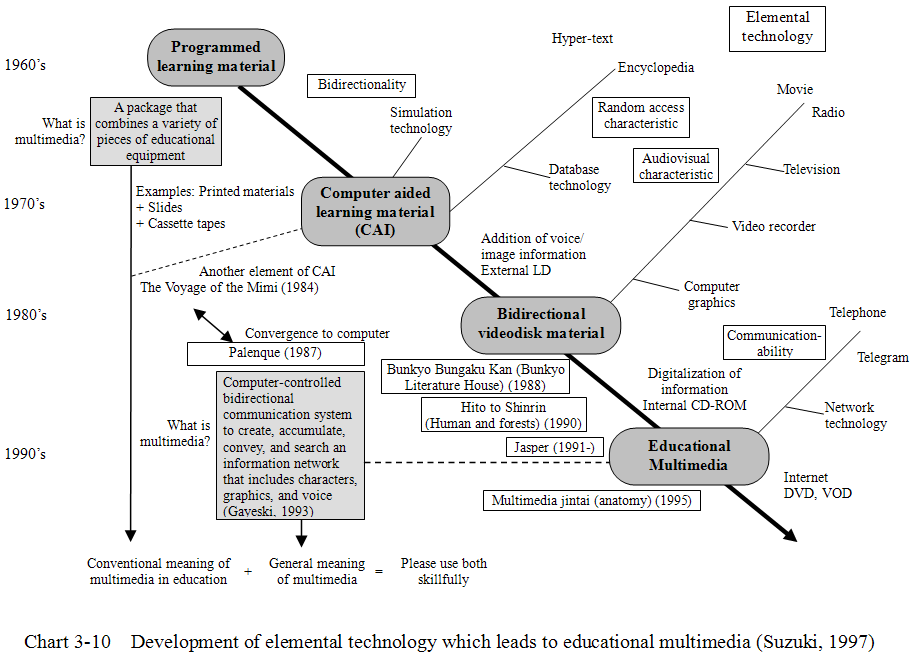[Session 6] Theories of learning, instruction and evaluation (4)
Educational Media Research and Selection of Media
- Introduction -
There are various education media which technological innovation has made possible. People have long examined what education media can do and how we should use them. Comparison researches on educational media have been implemented by utilizing the method of Aptitude Treatment Interaction (ATI). These researches have formed many opinions. For example, "there is no media which can solve all the problems, but any media can make learning possible;" "an appropriate learning environment varies according to the characteristics of the learning tasks and learners;" "newer media can improve the effect of learning (Novelty effect);" "the difference results from not a medium we choose but how the medium is used (Media attributes, functional equivalence);" "an attitudes toward a medium influence the learning effect (Media perception);" and "since any media can enable people to learn, a simpler medium to activate learners will be good (Schramm's summary: Simple media, active students)" from an economic viewpoint (Saga, 1995). Along with the advancement of information communications technology (ICT), various learning environments have been proposed and realized (Suzuki, 2005).
The development of element technology, which leads to so-called educational multimedia is shown in the chart below (Suzuki, 1997). In this Session, we survey the history of educational media research and focus on The Voyage of the Mimi as a typical material. Then let's trace the history which leads to the Adventure of Jasper Woodbury, which is to be picked up in Session 8. At the end of the Session, a model as to how to select media is shown. I would like you to read it if you have time.

 References
References 
-
Saga, H. (1995) "Educational media research which pursues links with culture." Educational Media Research, Vol. 1, No. 1, pp.44-49 [In Japanese]
-
Suzuki, K. (2005) "Commentary: Current Trends of Instructional Design Theories and Models for ICT Utilization." Journal of the Japanese Society for Information and Systems in Education, Vol. 22 No. 1, pp.42-53 [In Japanese]
-
Suzuki, K. (1997) "Chapter 3 Multimedia and Education." K. Akahori, Schools in the Highly Sophisticated Information Society – Aimed at Establishing the Most Advanced Schools. (School Reform Practice Series Vol. 3) Gyosei, pp.73-104 [In Japanese]